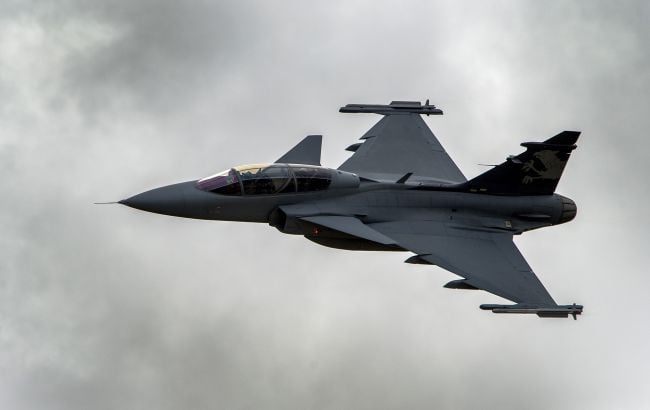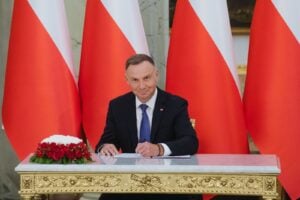Swedish fighter jets in doubt: will Ukraine get long-awaited Gripen?
30 September 18:50
For the first time, Ukraine will receive Swedish Gripen fighter jets, which will join the expected deliveries of American F-16s and French Mirage. This was announced by Deputy Defense Minister of Ukraine, Lieutenant General Ivan Havryliuk in an interview with the Ukrainian service of the BBC.
The specific dates of arrival of the aircraft are not yet known. According to Havryliuk, Ukrainians will know about their arrival only when they see these planes in the sky over the country:
“Only when they start flying over Ukraine will it be possible to say that they are already here.”
He emphasized that strengthening Ukraine’s air defense systems is an important contribution to the security of the whole of Europe.
Earlier, Sweden did not rule out the possibility of providing Ukraine with Gripen fighter jets, but Defense Minister Pel Jonson emphasized that the sale of such aircraft could take place only after the war is over.
What they say in Sweden
The Swedish media asked the Ministry of Defense for a comment on the possible delivery of Gripen fighter jets to Ukraine. The ministry’s spokesman, Johan Elmstrand, said that negotiations on this issue are ongoing between Ukraine and Sweden, but there are no new details yet.
He characterized the process as a “good and deep dialog”.
The official position of the Swedish Ministry of Defense indicates a desire to conduct open and constructive negotiations on further defense cooperation and possible delivery of fighter jets, but no specific agreements have been made public to date.
Strengthening aviation – gradually and continuously
In an exclusive commentary for "Komersant Ukrainian", the spokesman for the Ukrainian Volunteer Army, Serhiy Bratchuk, spoke about changes in the Ukrainian Armed Forces’ aircraft fleet and the role of Western equipment in the current phase of the war. According to him, the ratio between Soviet and Western aircraft is gradually changing in favor of the latter, which provides a significant boost to Ukrainian aviation.
“At this rate, I think that the fleet of Soviet aircraft will decrease in proportion compared to Western weapons, which, of course, is a reinforcement for us, a significant reinforcement,” Bratchuk said.
He emphasized that aviation is now working as a punching bag, performing tasks to destroy enemy frontline positions, and expressed hope that the tasks will expand over time, although they should not be publicized yet.
Bratchuk emphasized that it is difficult to name the exact number of equipment needed due to combat losses on both sides and the need to replenish the fleet.
“It is unlikely that anyone will tell you the absolute number, because the planes are unfortunately in combat and there are losses… so we need to replenish the aircraft fleet. As they say, there won’t be a lot of them,” he said.
He also emphasized the importance of logistics: an airplane is a “launcher,” but it needs ammunition. He reminded of the parallel with the Tomahawk: the ammunition itself is needed, but launchers are also needed.
When asked about the timing and details of the delivery of the equipment, Bratchuk replied that such things are not informed in advance – it is a matter of security.
“No one will report this for sure… the enemy should not know what we are getting and how it will be delivered,” explained the UDA spokesman.
He also cited an analogy with the appearance of F-16s in the sky: when the equipment is already on combat duty, the public will see it for themselves.
“We will just see the airplanes. I think that military pilots will demonstrate this to us, as they did with the F-16, at certain locations,” Bratchuk said.
Why the position of the partner countries has changed – the “fog of war” and realities on the battlefield
Discussing the changing positions of individual countries on arms supplies (in particular, the example of Sweden), Bratchuk recalled the “fog of war” and the impact of the information space on the perception of reality. In his opinion, the final decisions of partners are shaped by Russia’s specific actions at the front and beyond.
“There are circumstances that change the position. Obviously, everyone has seen that Russia is a terrorist, Russia is not going to stop the war. Ukraine has to win this war, because Ukraine’s victory means reducing the risks for Europe,” Bratchuk emphasized.
He also pointed to the incidents with drones in the skies of Scandinavia as a factor that prompted European countries to act more decisively. Overall, Bratchuk expressed hope that even small supplies of equipment and ammunition would create a “flow” that would help restore aviation capabilities.
“Finally, I hope that such a stream or even a small source will provide us with more aircraft and ammunition,” Bratchuk summarized.
Technical characteristics
The Swedish multi-role fighter Saab JAS 39 Gripen (especially the E/F version) is a modern aircraft with a maximum speed of about Mach 2, a combat radius of up to 1500 km, a practical ceiling of up to 15,000 m and the ability to carry up to 7.2 tons of weapons. It is equipped with an AESA radar, electronic warfare system and can use a variety of air-to-air and air-to-ground missiles.
Main technical characteristics (Gripen E/F version):
- Crew: 1 person (E version) / 2 people (F version).
- Maximum speed: up to Mach 2 (approximately 2,470 km/h).
- Practical ceiling: approximately 15,000 meters.
- Combat radius: up to 1,500 km without refueling.
- Payload (combat load): up to 7.2 tons.
- Engine: General Electric F414G, which provides supersonic cruising speed without afterburner.
- Number of suspension points: 10.
Weapons and avionics:
- Radar: AESA Raven ES-05.
- Other equipment: integrated electronic warfare system, IRST sensors.
- Armament: air-to-air missiles (medium and long range), air-to-ground missiles, anti-ship missiles and guided bombs.
Additional features:
- Duck aerodynamic design: improves maneuverability and takeoff and landing performance.
- Open architecture: allows for easy integration of new weapon systems and instruments.
- Modular avionics: facilitates software upgrades to meet new requirements.









